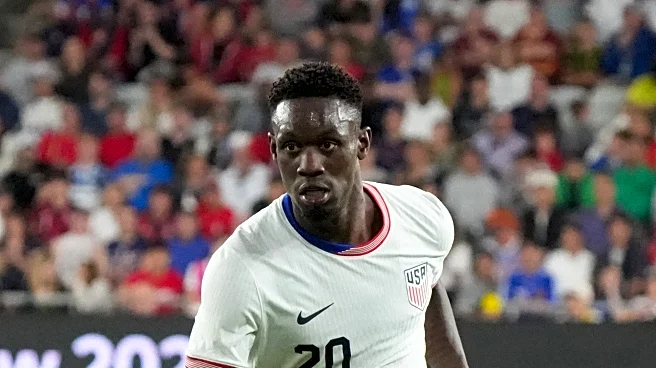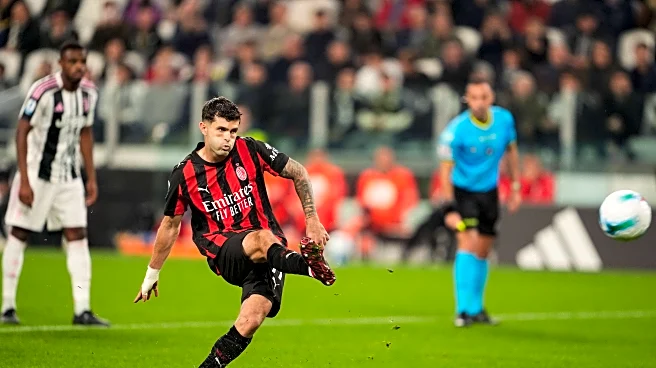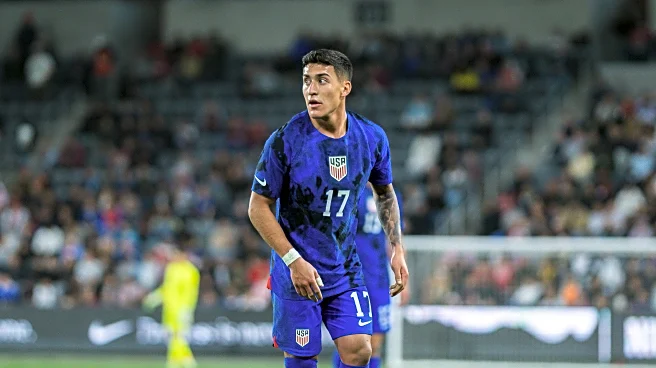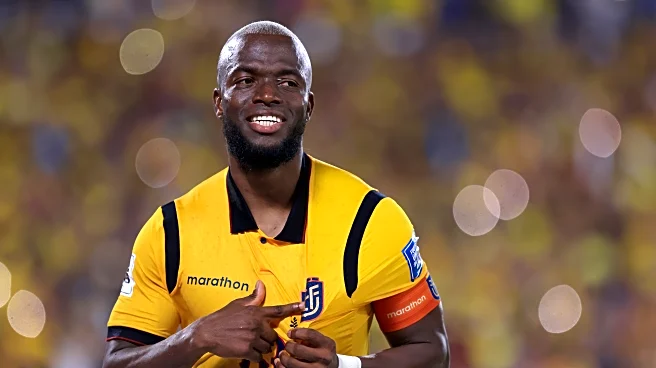What's Happening?
The U.S. men's national soccer team is facing challenges in selecting a consistent starting striker for the upcoming 2026 FIFA World Cup. Historically, players like Eric Wynalda and Brian McBride led the team, but recent cycles have seen a lack of a definitive choice. The 2022 World Cup cycle featured several candidates, including Ricardo Pepi and Josh Sargent, but none secured the position. Currently, Folarin Balogun, Haji Wright, and Patrick Agyemang are among the contenders, with Balogun showing promise in recent matches. However, injuries and club competition have hindered his ability to solidify his role. The team is preparing for friendlies against Ecuador and Australia, which may influence the final decision.
Why It's Important?
The selection of a reliable striker is crucial for the USMNT's success in international competitions. A consistent forward can significantly enhance the team's offensive capabilities, impacting their performance in the World Cup. The uncertainty in striker selection reflects broader challenges in U.S. soccer, including player development and international competitiveness. The decision will affect the team's strategy and could influence the perception of U.S. soccer on the global stage. Successful integration of a strong striker could lead to improved results and bolster the team's reputation.
What's Next?
The upcoming friendlies against Ecuador and Australia will provide an opportunity for the contenders to demonstrate their capabilities and potentially secure their spot on the World Cup roster. Coach Mauricio Pochettino will evaluate the players' performances, considering factors such as fitness, form, and compatibility with the team's playing style. The final decision will likely be influenced by these matches, as well as ongoing assessments of player health and club performance. The team aims to finalize its roster in preparation for the World Cup, ensuring a balanced and competitive squad.
Beyond the Headlines
The striker selection process highlights the evolving dynamics of U.S. soccer, including the integration of players with diverse backgrounds and experiences. Balogun's eligibility for multiple national teams underscores the global nature of soccer talent and the strategic decisions involved in national team selection. The emphasis on flexibility and adaptability in player profiles reflects broader trends in modern soccer, where versatility is increasingly valued. This situation also raises questions about the development pathways for U.S. players and the role of international experience in shaping their careers.












